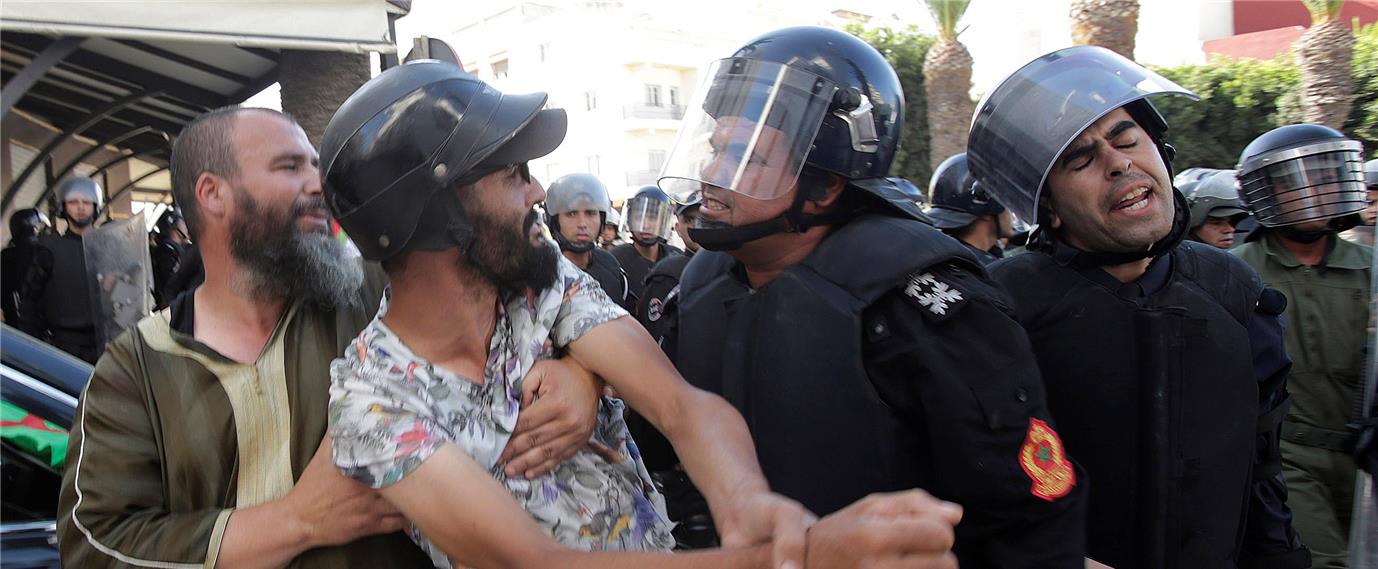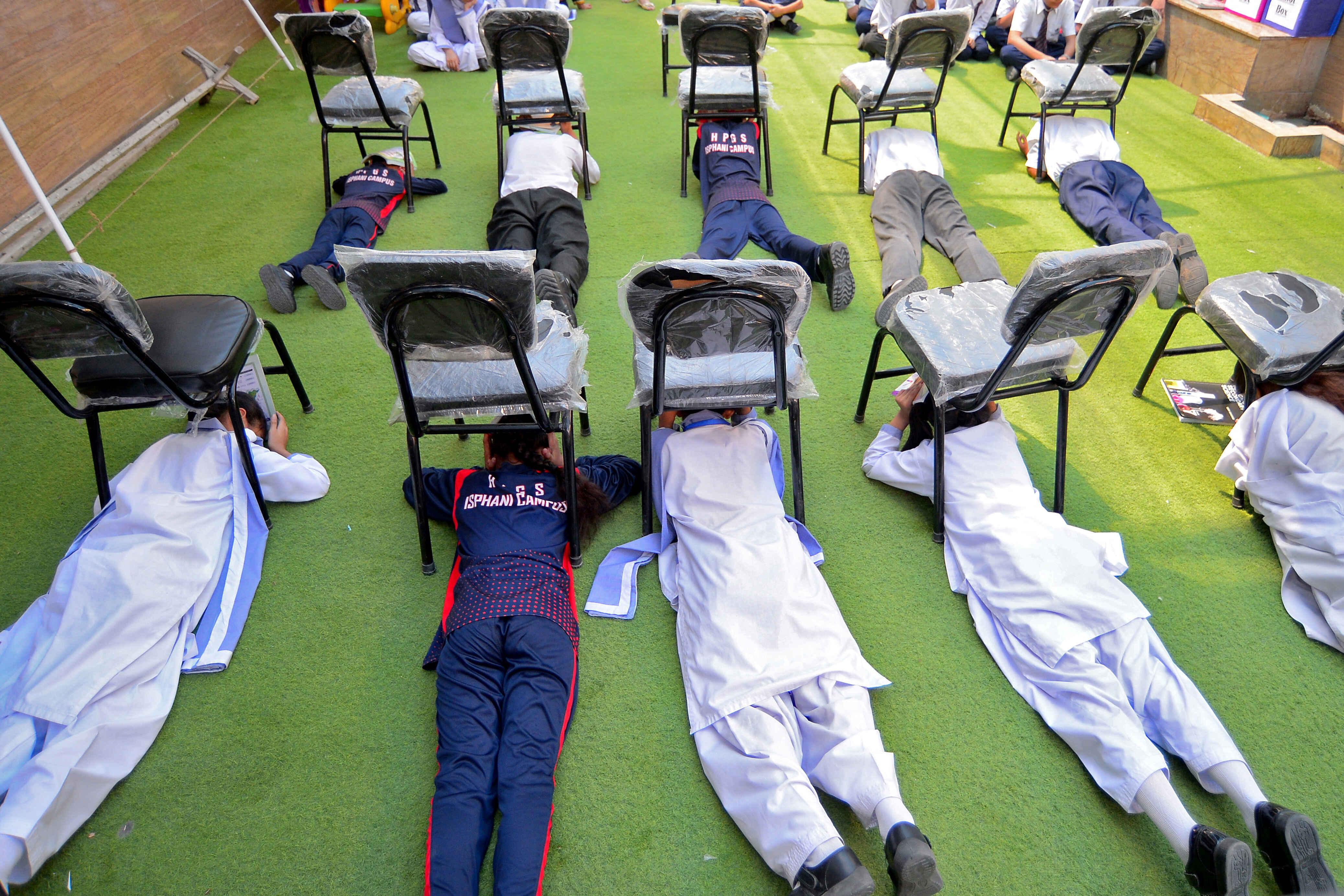أكمل الحراك الشعبي في مدينة الحسيمة (إحدى الحواضر الكبرى في منطقة الريف شمال المغرب) سنته الأولى في 28 أكتوبر/تشرين أولالماضي، بحلول ذكرى مقتل بائع السمك محسنفكري في شاحنة لجمع النفايات، بعد أن حاول استرداد أسماك صادرتها السلطات بحجّة عدم قانونية صيدها.
عُرفت الحادثة على مواقع التواصل الاجتماعي في البداية، بالوسم الشائع حينئذ #طحن_مو (اطحن أمه). إثرذلك خرج أبناء المنطقة في تظاهرات ومسيرات احتجاجا على الظلم، ثم تحولت هذه الاحتجاجات إلى مطالب شعبية اجتماعية واقتصادية وثقافية وُسمت بـ"#حراك_الريف".
تعامل الإعلام الرسمي المغربي مع هذا الحراك بصورة لا تتناسب مع حجمه، فيما تفاعل الإعلام المغربي غير الرسمي مع هذه الحركة الاحتجاجية بشكل متباين، لكن مواقع التواصل الاجتماعي نقلت الاحتجاجات الاجتماعية بطريقتها الخاصة، وقد كانت مصدرا مهما للخبر اعتمدتها في البداية وكالات أنباء وصحف دولية وبعض الصحف الوطنية أيضا.
الإعلام والمجال والإنسان
منطقة الريف التي يتواصل أهلها بأمازيغية "ثاريفيث"، كانت قبل الاستقلال عن إسبانيا محطّ اهتمام الصحافة والإعلام الدولي والإسباني أساسا، خصوصا وأن صحيفة "تلغراما ذي الريف" كانت تصدُر من مدينة مليلية المحتلة (تبعد بأزيد من مائة كلم شرق الحسيمة)، وقد اشتغل فيها محررا آنذاك، زعيم ثورة الريف الثانية على الإسبان في الفترة ما بين 1912 و1926، "محمد بن عبد الكريم الخطابي"، قبل أن ينقلب على الاستعمار الإسباني ويصبح رمزا للمقاومة ضد الاستعمار ككل في القرن العشرين.
بعد الاستقلال هُمشت المنطقة على مستويات عدة، ما خلق في كثير من الأحيان توترا في العلاقة بين سكان المنطقة الجبلية المعزولة عن المركز (تبعد عن الرباط بأزيد من 470 كم)، والسلطات والدولة عموماً في المركز.
حتى أن الإعلام الرسمي للبلد غاب عنها لفترة طويلة، باستثناء تقارير تُنجز بين الفينة والأخرى لا تعكس حقيقة المنطقة ومعاناة أهلها. لكن بعد ما عُرف بالعهد الجديد أو عهد "المصالحة والإنصاف" مع بداية الألفية، أحدثت السلطات إذاعة جهوية بالحسيمة (كانت الذكرى الثامنة لتأسيسها في يونيو/حزيران الماضي وهي تابعة للإذاعة الوطنية بالرباط)، ثم قررت بعد ذلك القناة الثانية كذلك أن تنشأ مكتبين جهويين لها بالريف (الحسيمة والناظور) بقي منهما الآن واحد فقط في الحسيمة.
هذه الملحقات الإذاعية والتلفزيونية للمركز، كما يرى مراقبون عدة، ما كانت لتكون في المنطقة، لولا أن زلزالا ضرب الحسيمة عام 2004، وخلف أضرارا بشرية ومادية كبيرة جدا، كشف عن حجم التهميش والهشاشة التي تعانيها المنطقة.
لكن بالنسبة للإعلام غير الرسمي، فالعديد من الصحف الوطنية المستقلة تعتمد مراسلين محليين لنقل أخبار المنطقة عموما، زيادة على صحف ورقية محلية أسّسها أبناء المنطقة انقرضت في الوقت الحالي أمام تمدّد الإعلام الرقمي، إذ أنشأ العديد من "هواة الصحافة" هناك صحفا رقمية محلية، استطاعت رغم إمكانياتها البسيطة نقل أخبار الريف، خصوصا إلى نسبة مهمة من المغتربين من أبناء المنطقة في هولندا وبلجيكا وألمانيا.
الإعلام وحراك الريف
لقد لعبت الصحف الرقمية المحلية دورا محوريا في تغطية الحراك الاجتماعي في الريف، بنقلها لفيديوهات الاحتجاجات والمسيرات، وفيديوهات لبعض زعماء الحراك الشعبي الريفي، وكذا صور بائع السمك وهو مقتول في شاحنة جمع النفايات في البداية.
وقد استفاد نشطاء حراك الريف كثيرا، من دروس حركة 20 فبراير في التعامل مع مواقع التواصل الاجتماعي التي عبأت الناس للاحتجاج عام 2011،وعملوا على توظيف أكثر فعالية واحترافية لهذه الوسائل التواصلية الحديثة خصوصا فيسبوك وتويتر.
اعتمد شباب الحراك على موقعي فيسبوك وتويتر بشكل كبير في غمار المظاهرات والمسيرات، لنشر الأخبار الحقيقية عن عدد المشاركين في المظاهرات بالصوت والصورة، ولنقل التفاعل الذي كان يحدث من طرف القوات العمومية مع هذا الحراك.
"كان لابدّ من ذلك"، علق المتتبعون للوضع في الريف، بعدما فقد أبناء المنطقة كل ثقتهم في إعلام رسمي رهين "تقليدانيته"، بل فقدوا الثقة في إعلام يُعدّ في خانة المستقل، لكنه غالبا ما يُسقط الحركات الاحتجاجية الاجتماعية من اهتمامه بحكم قربه من السلطة ودفاعه عنها.
فالحراك الشعبي في الريف، كان "فرصة أخرى لـتأكيد وسائل التواصل الاجتماعي، وبالتحديد خاصية المباشر التي استطاع من خلالها الشباب المحتج، أن يتجاوز الإعلام الموالي أو المعادي له"، كما يرى صلاح الدين المعيزي، الإعلامي والأستاذ الزائر بالمعهد العالي للصحافة والاتصال بالرباط.
المصدر ذاته، أبرز في ورقة ساهم بها في ندوة "حراك الريف: نظرة إعلامية" في فاتح يونيو/حزيران 2017 بالدار البيضاء، أنه بعد سجن أبرز نشطاء الحراك، "وخاصة الإعلاميين منهم، بدأ الإعلام الكلاسيكي يسترجع قوته قليلا"، مضيفا أن السلطات استطاعت "تخفيض قوة قناة التواصل المباشر بين الساكنة المحلية المحتجة والرأي العام الوطني والدولي".
كما اعتبر الإعلامي صلاح الدين المعيزي، أن التغطيات الصحفية حول حراك الريف، تنوّعت من جيدة إلى سيئة ومسيئة، وتركت انطباعا لدى ساكنة الريفولدى المراقبين، في أنها تغطيات صحفية تماهت مع السلطة وقامت بتبني فرضياتها حول الريف، من دون أخذ مسافة من تصريحات الحكومة، خصوصا في اتهامها لقادة الحراك بتلقي تمويلات أجنبية وبالانفصال.
بل إن هذه التّغطيات التي كشفت عن تجازوات لا مهنية، كان هدفها "الإعداد لتجريم النضال الاجتماعي بالريف، وتهيئة الرأي العام لحملة الاعتقالات في صفوف قادة الحراك"، يشير الإعلامي، صلاح الدين المعيزي.










































